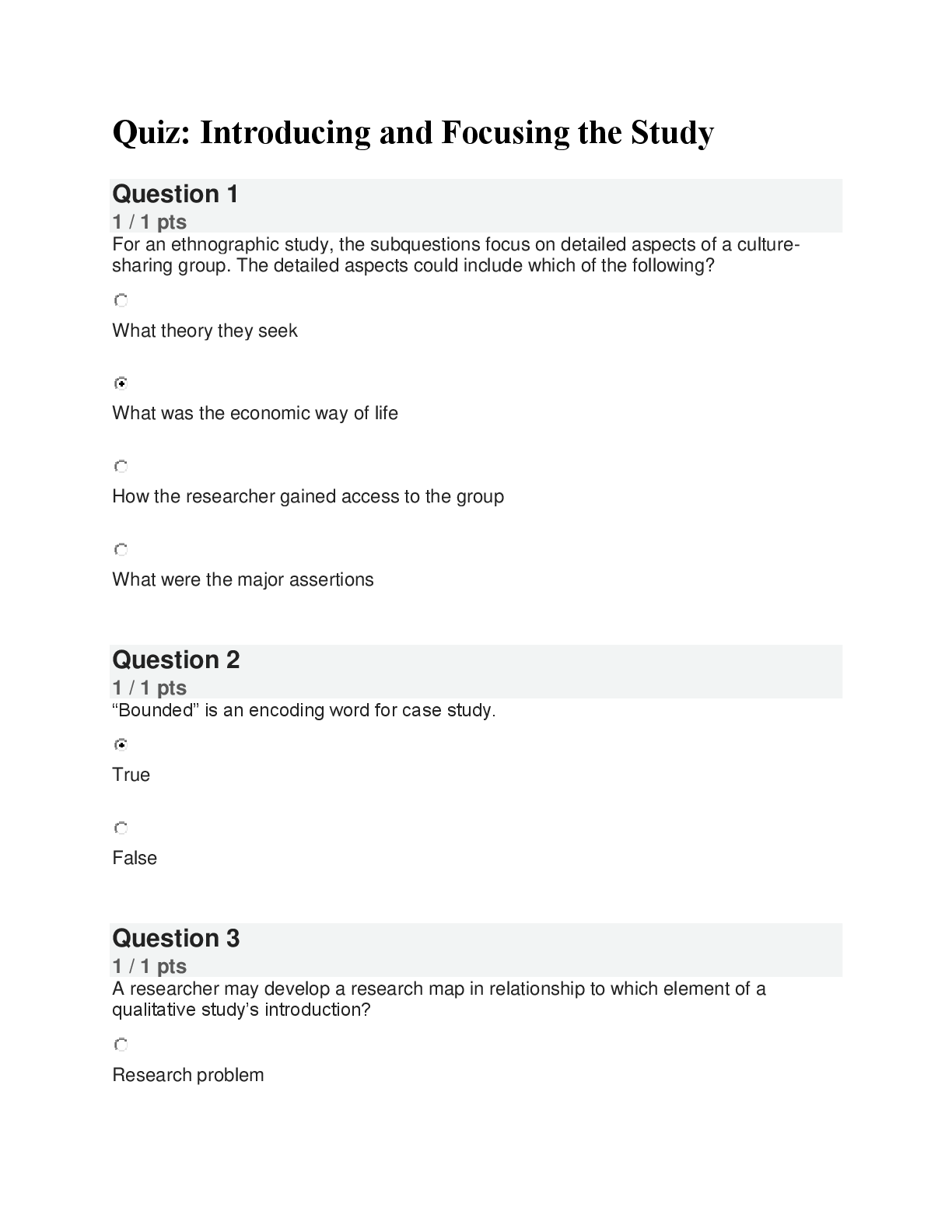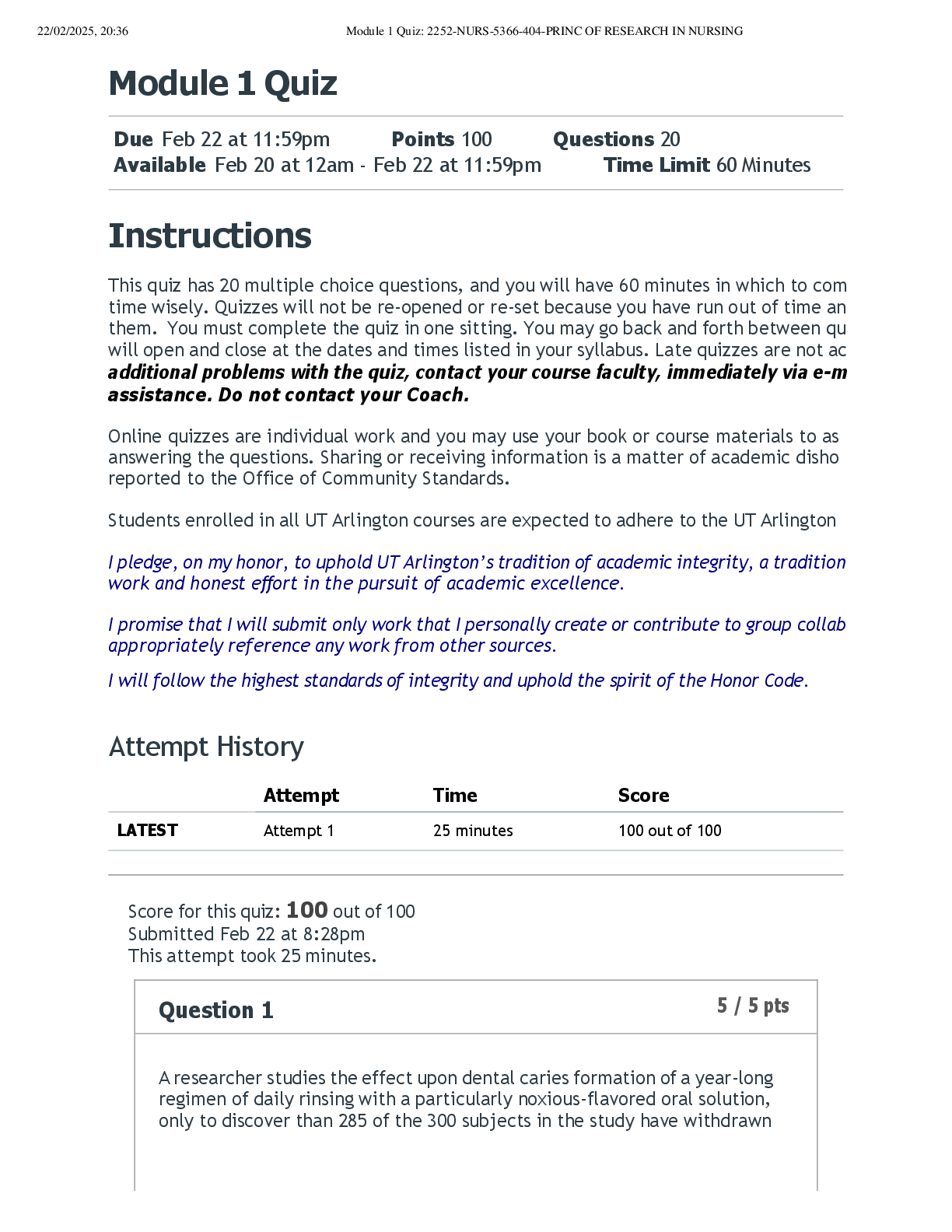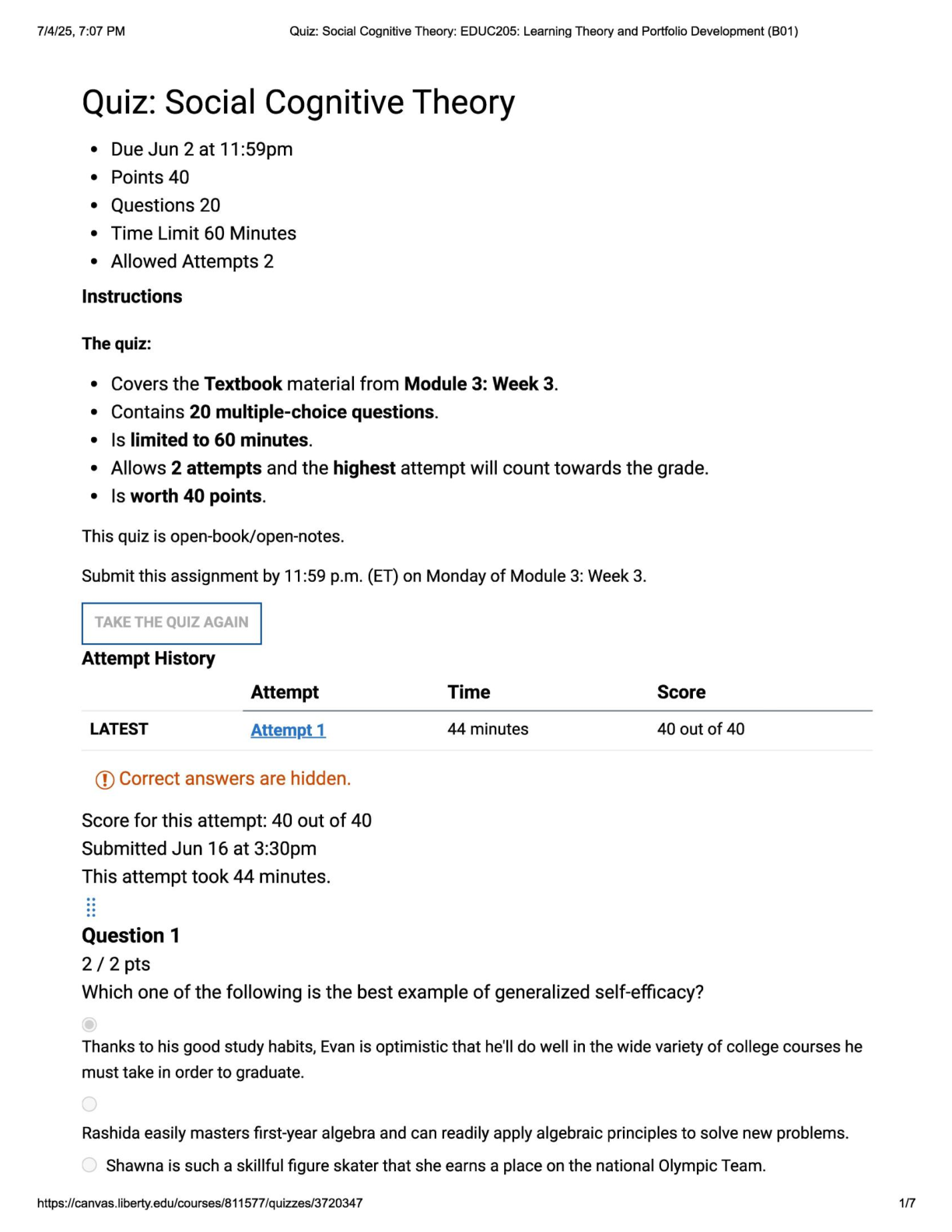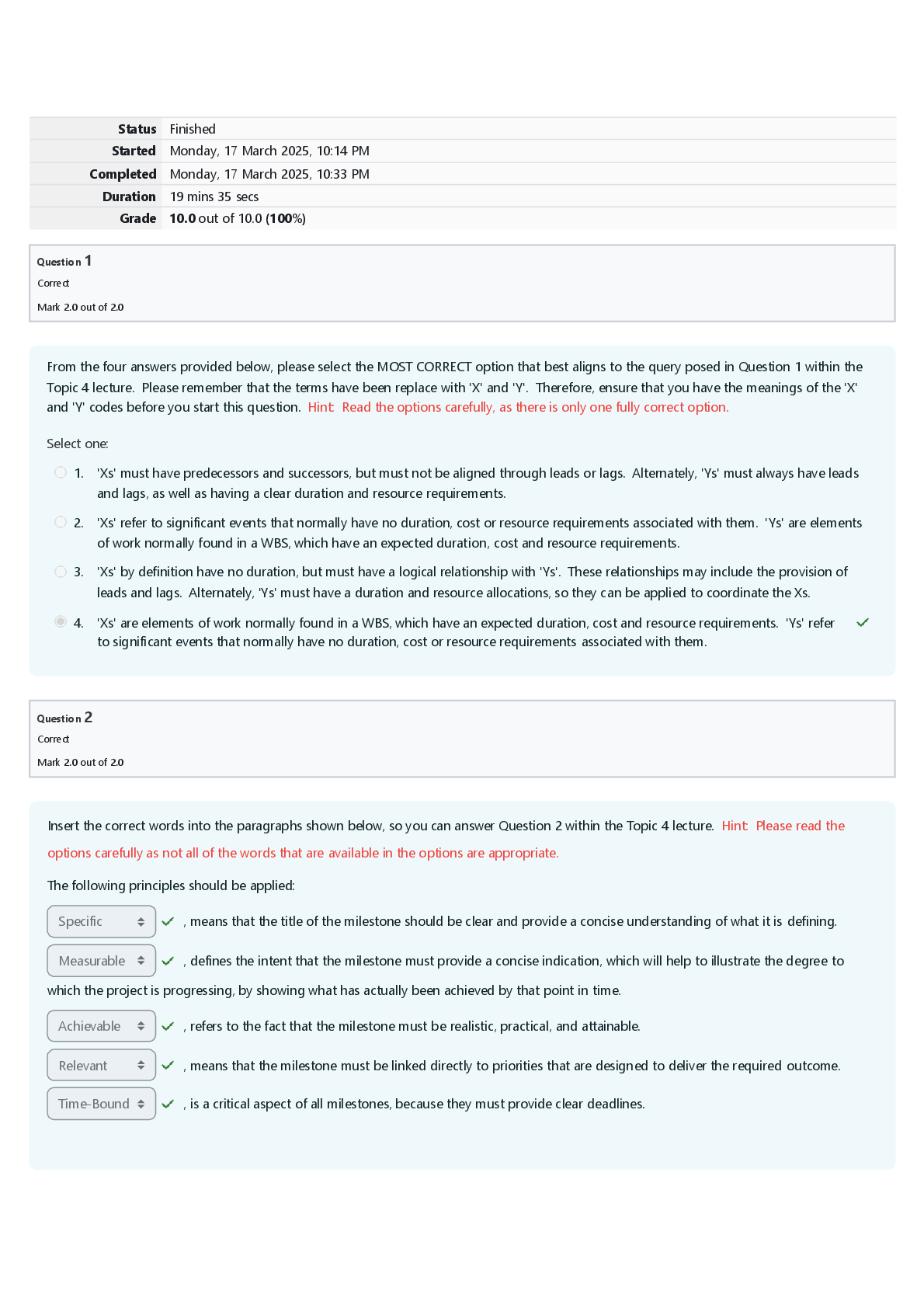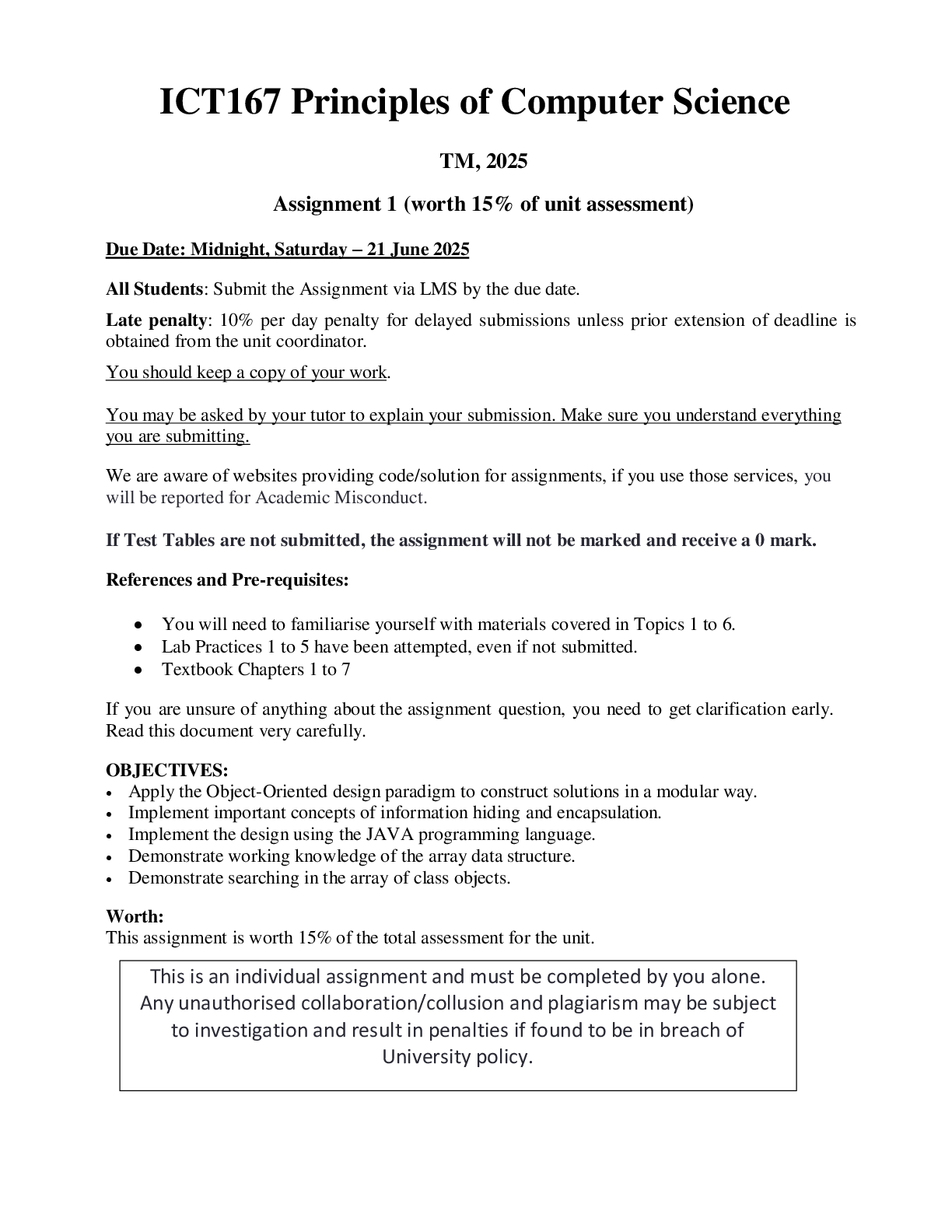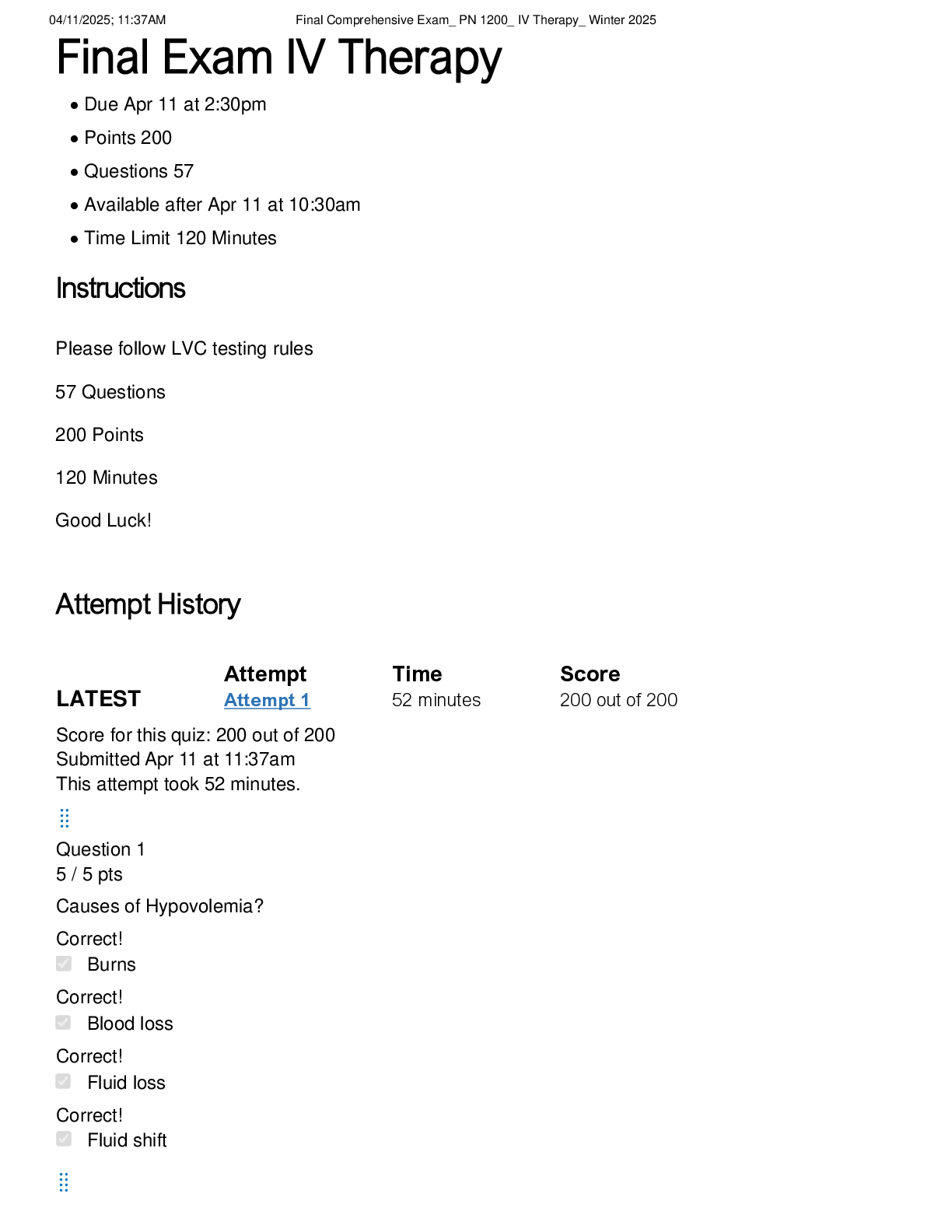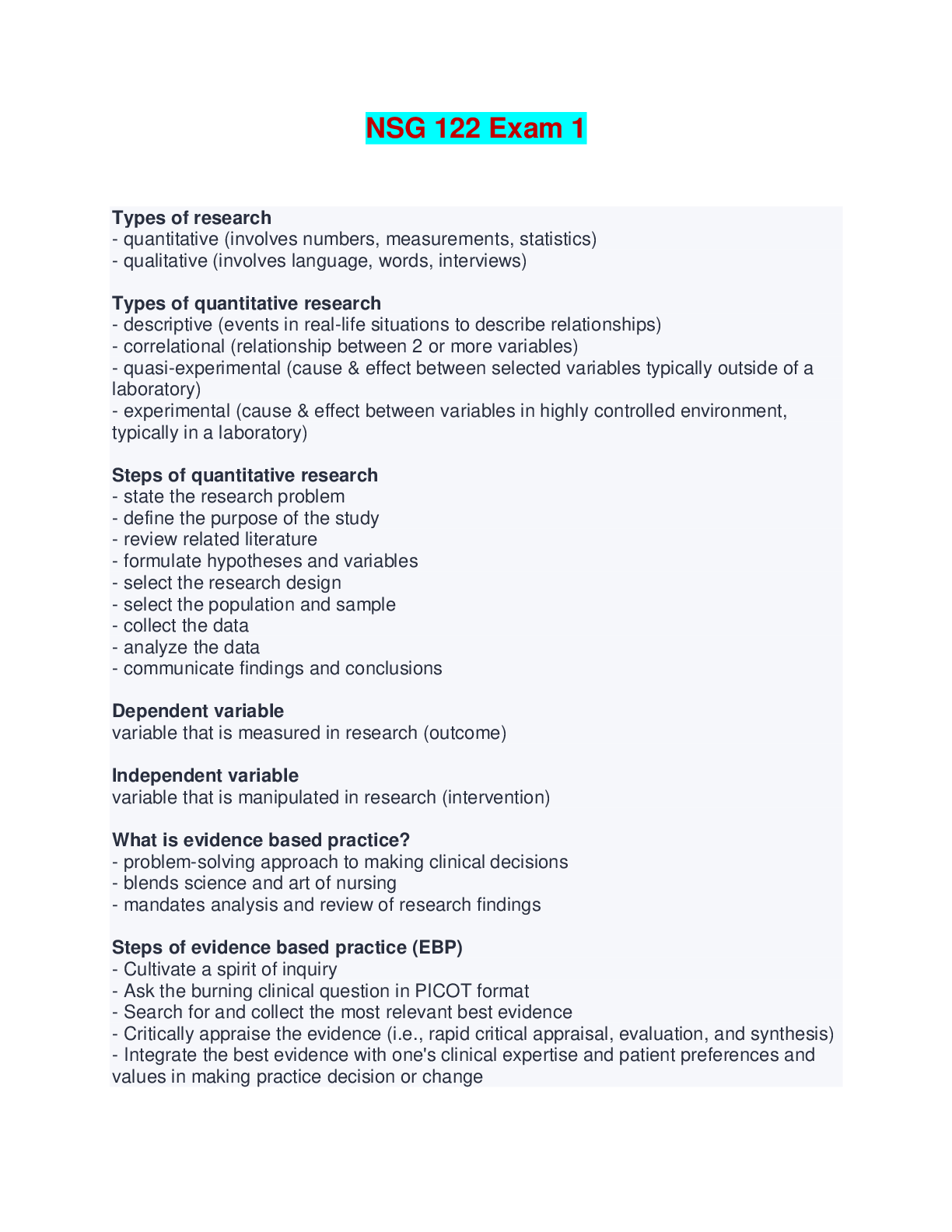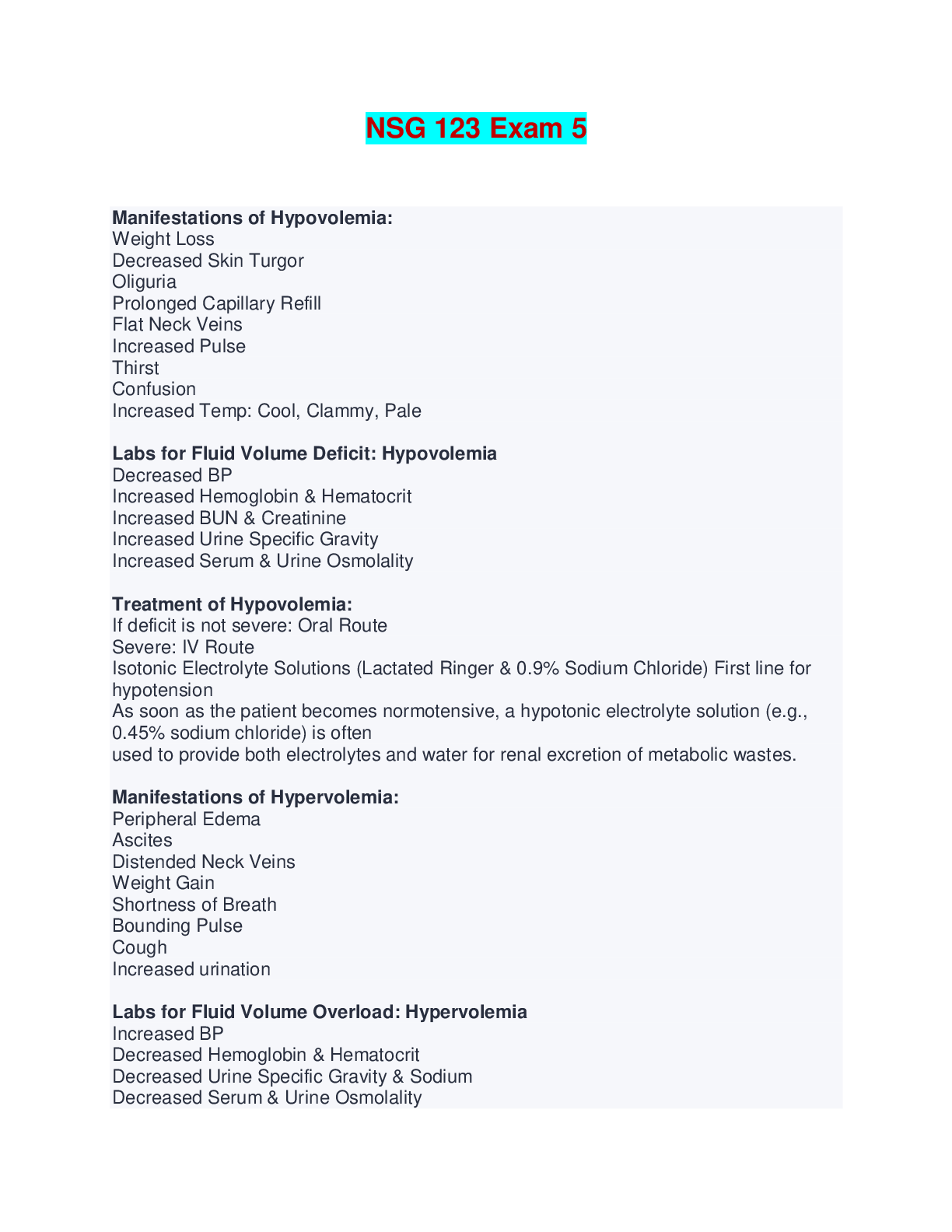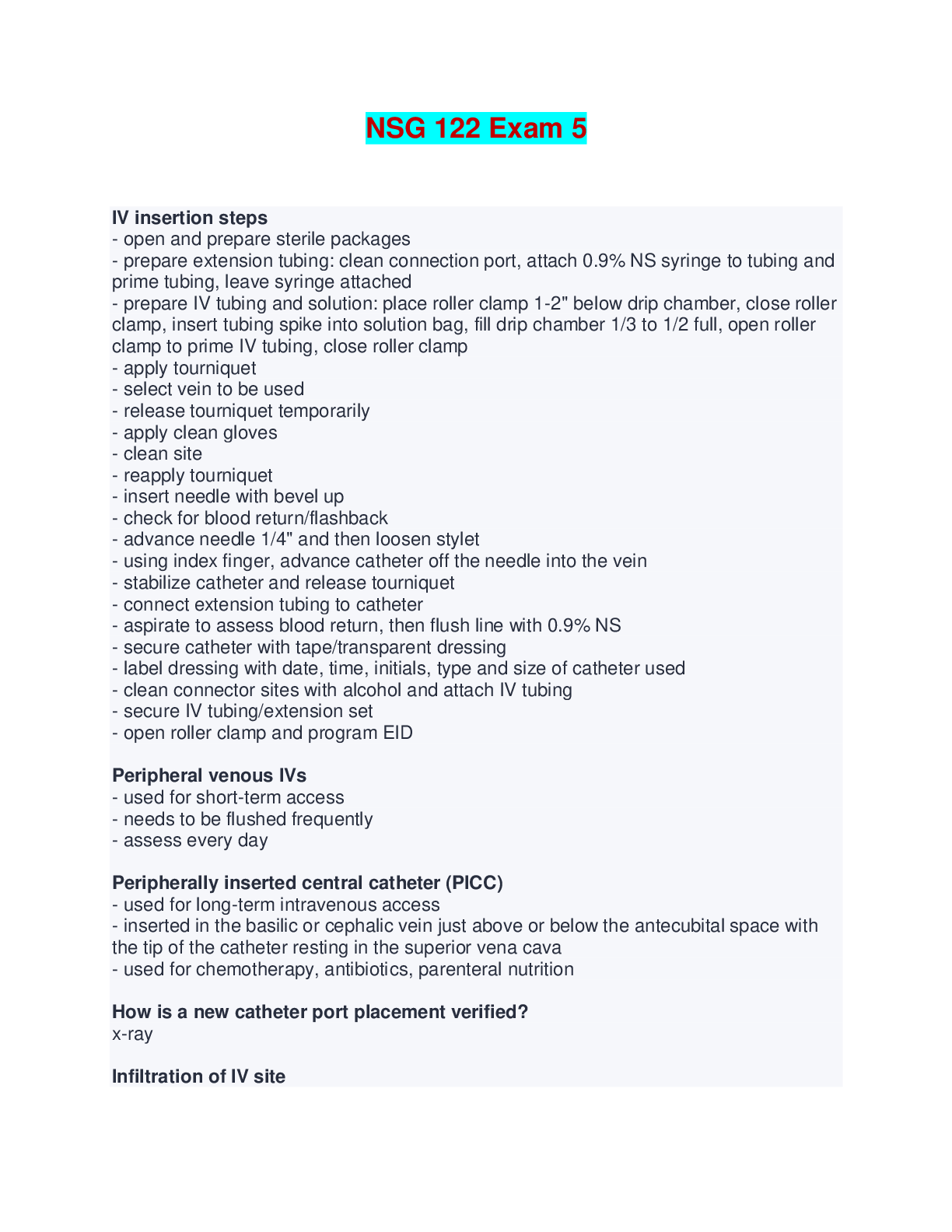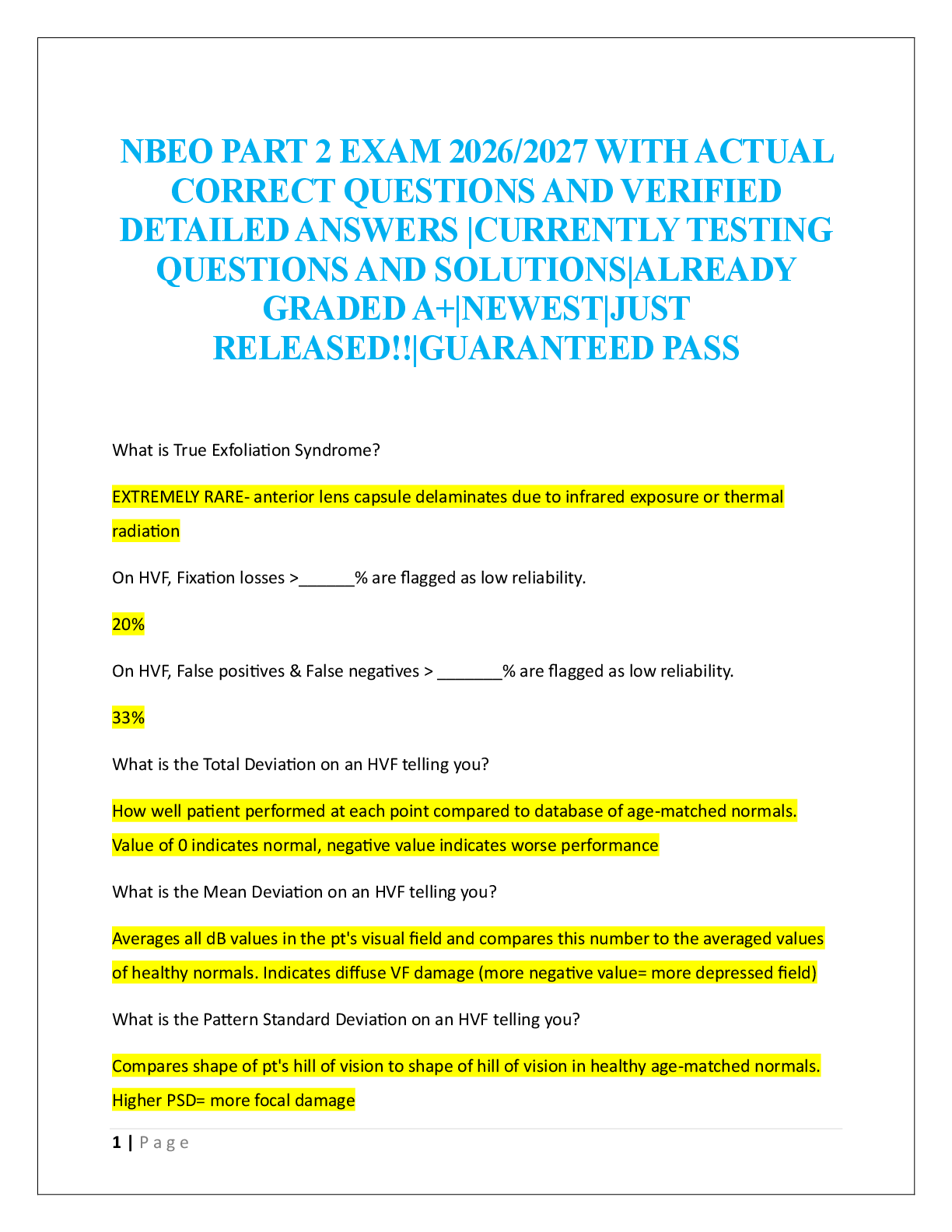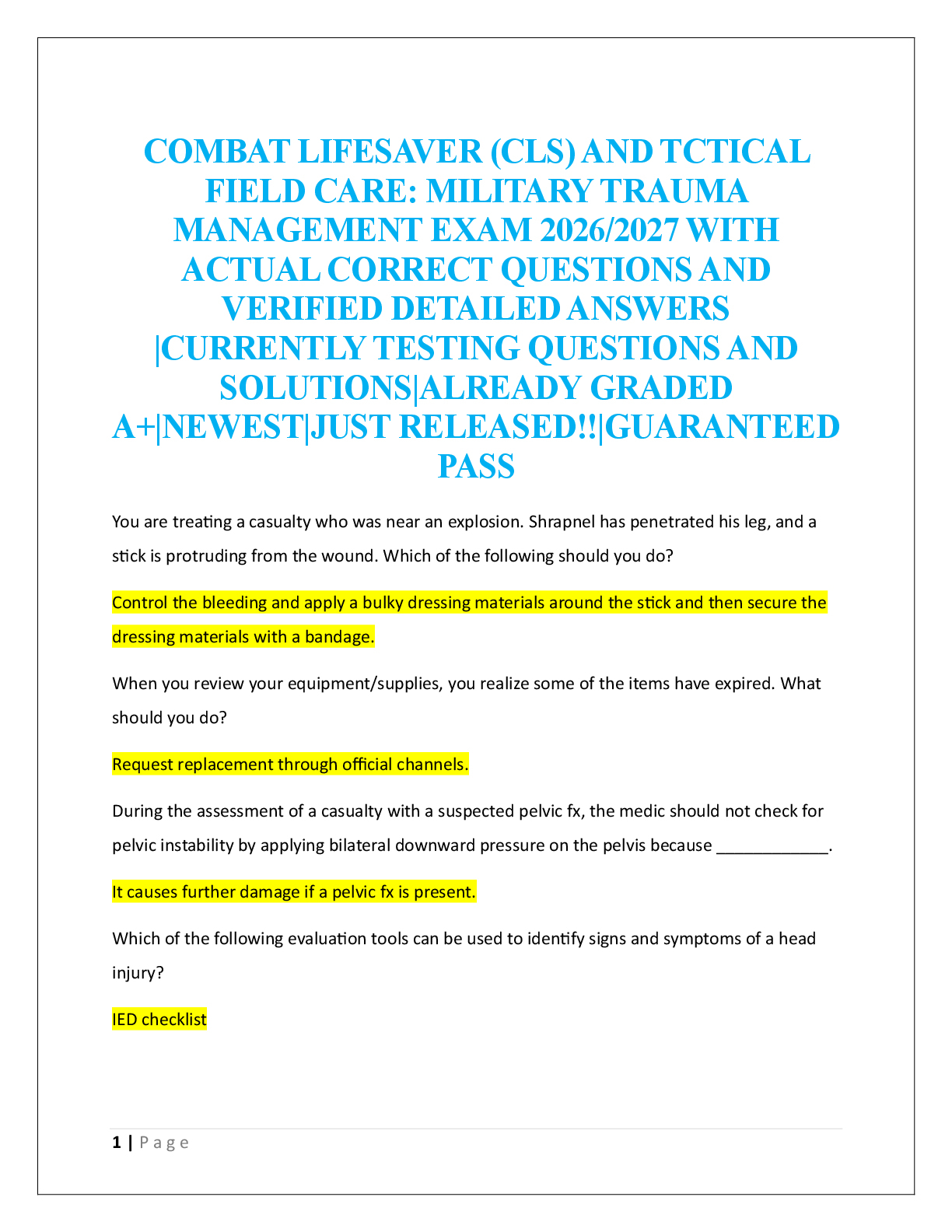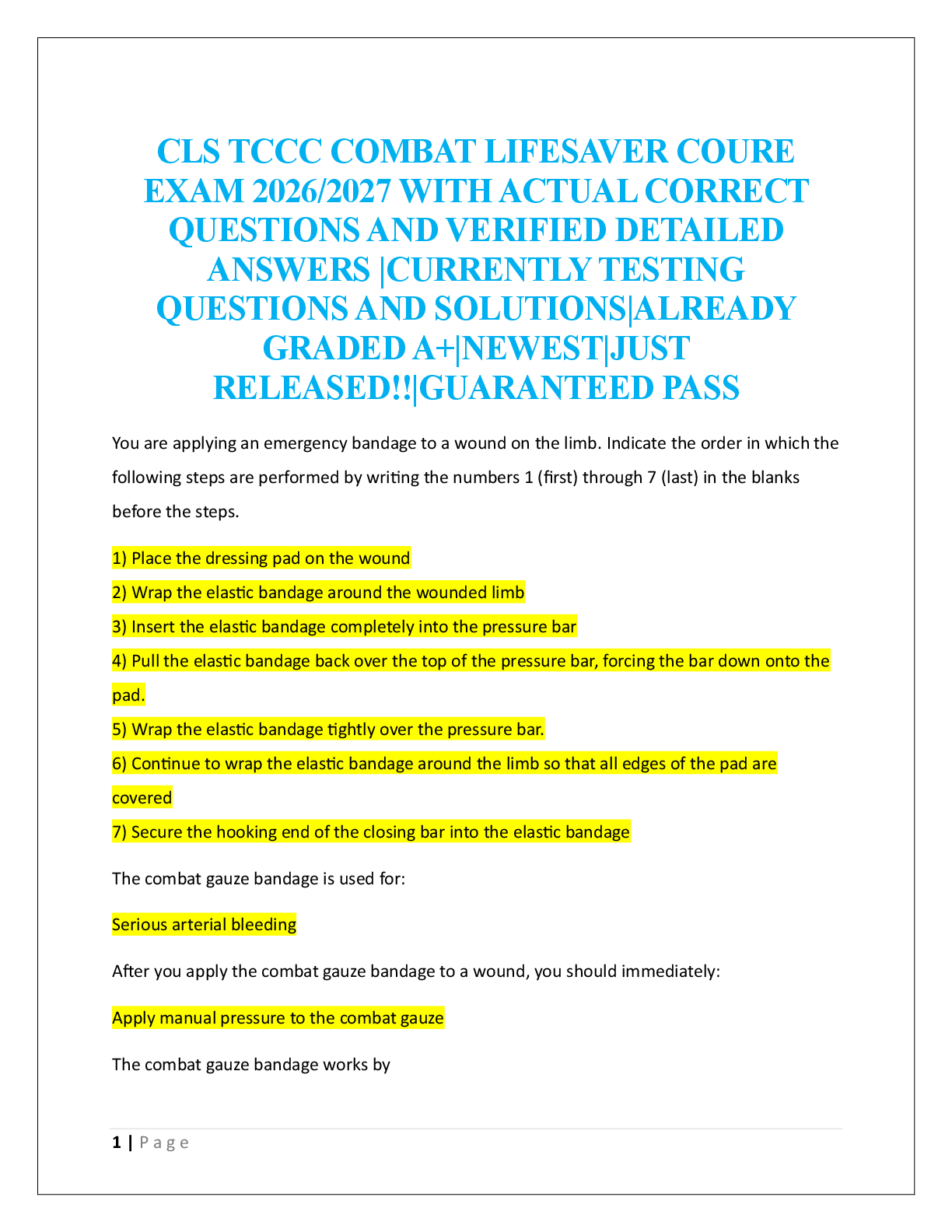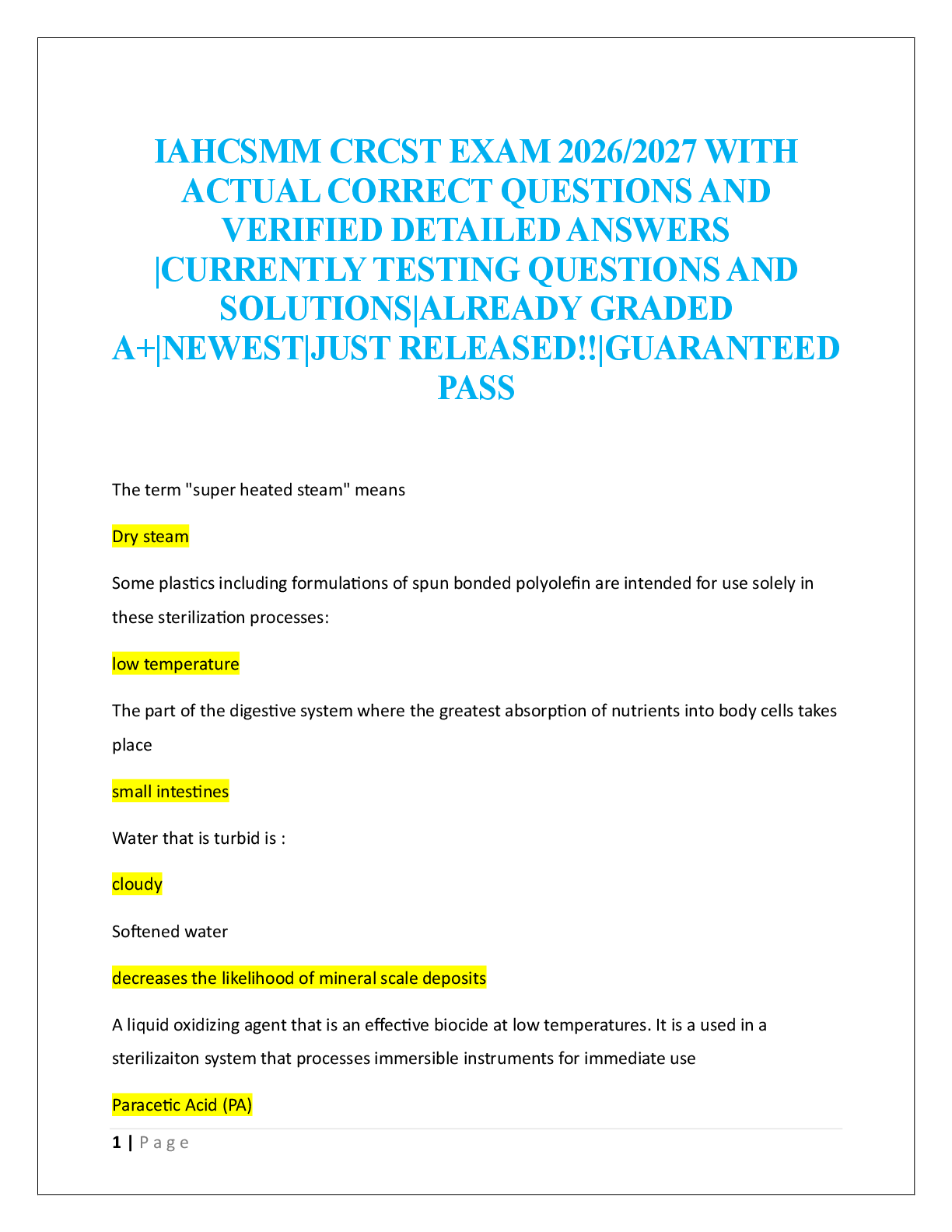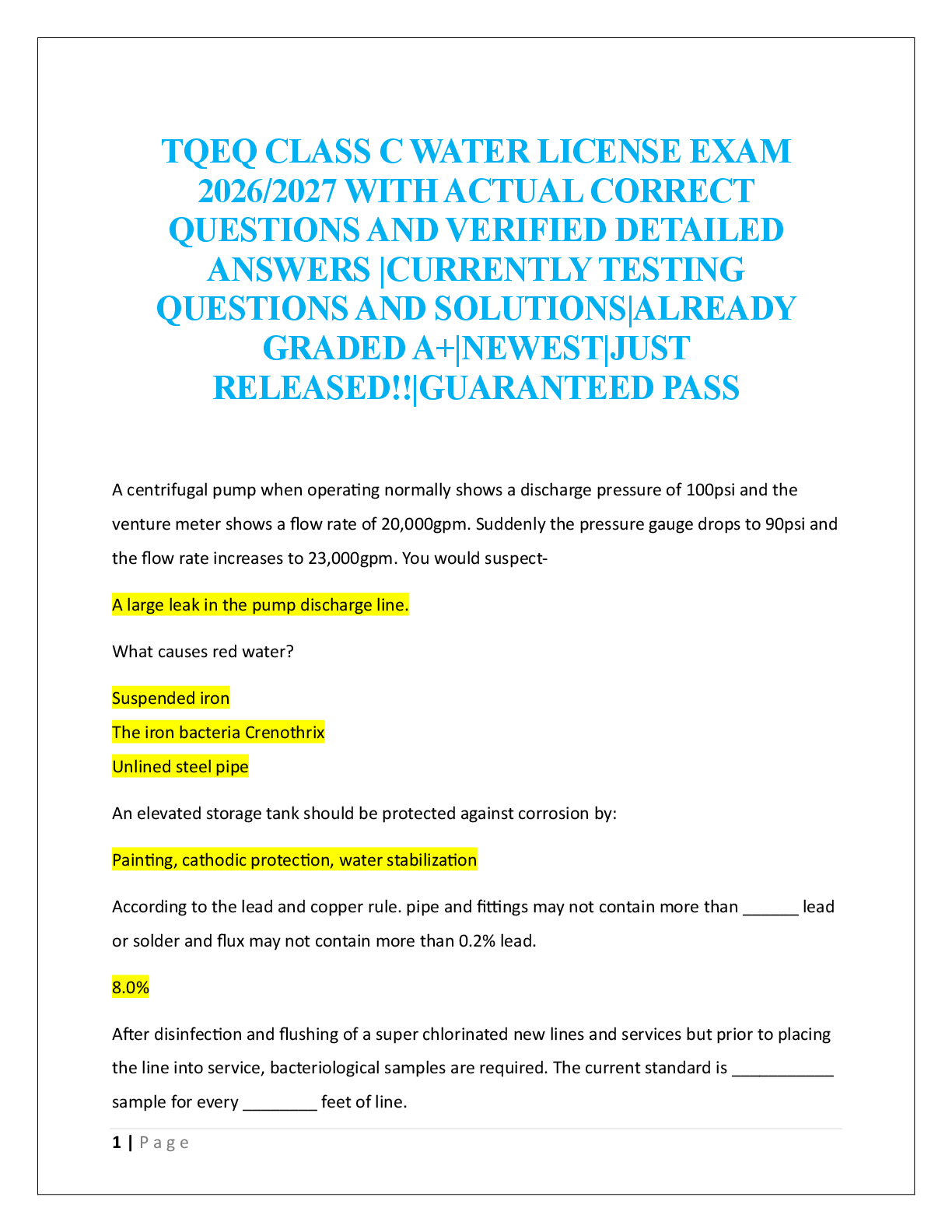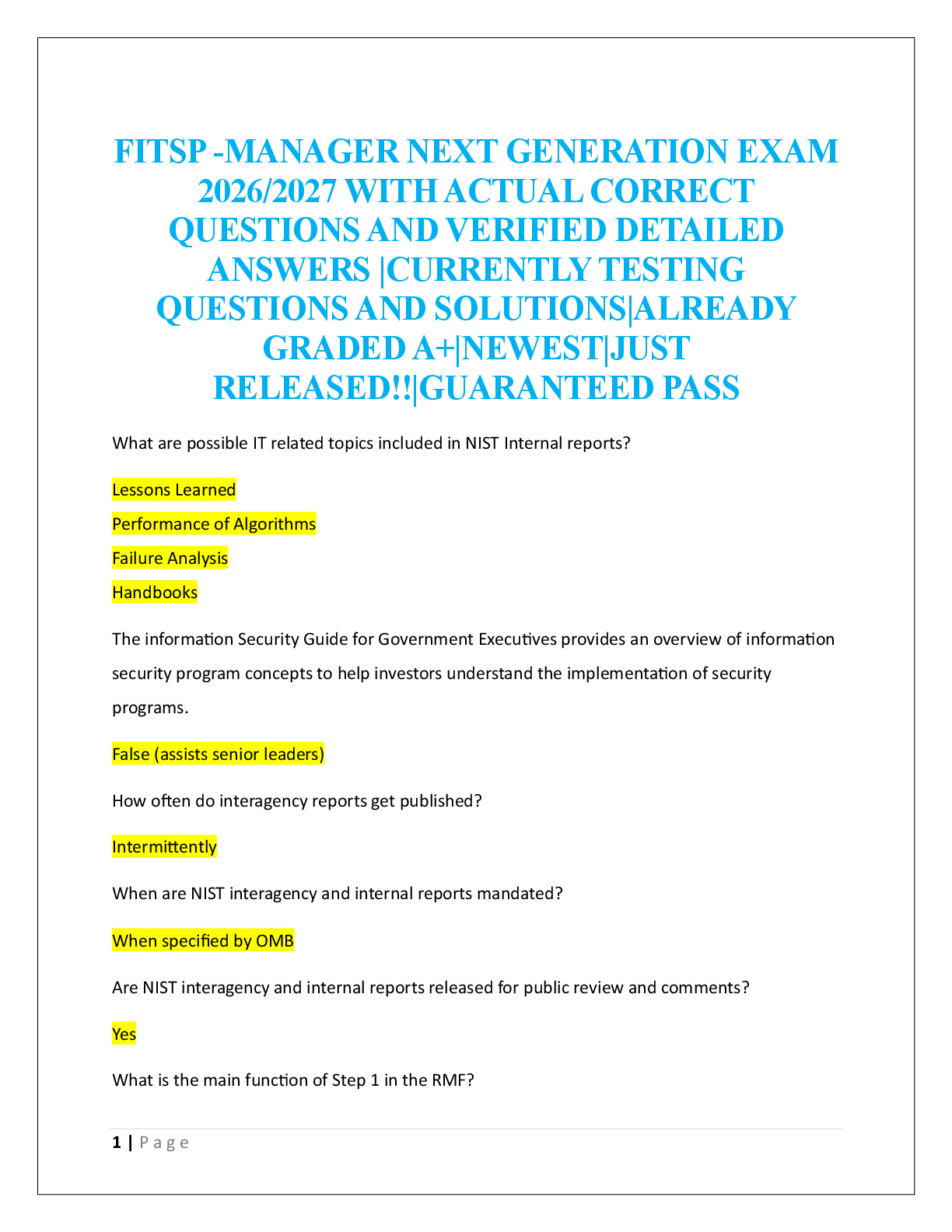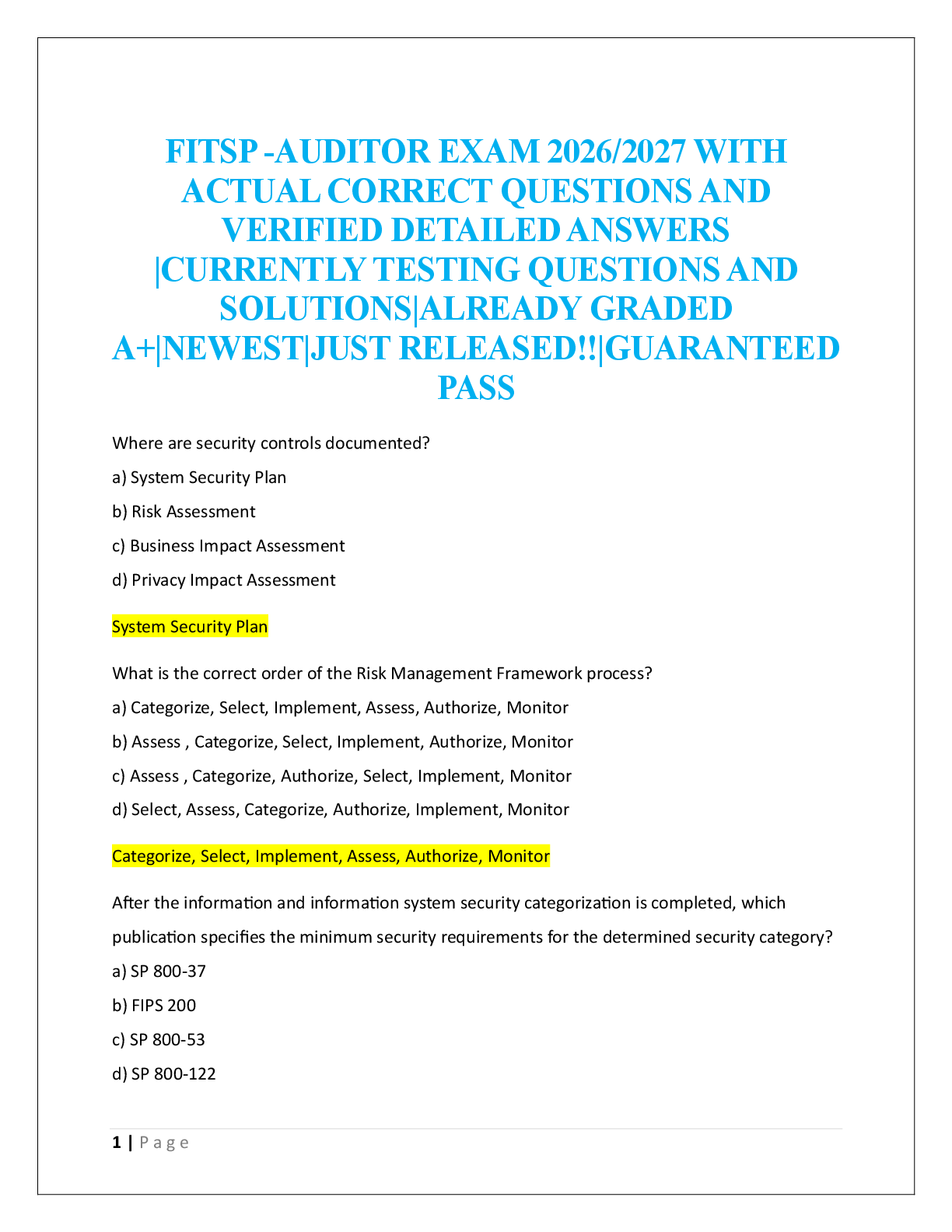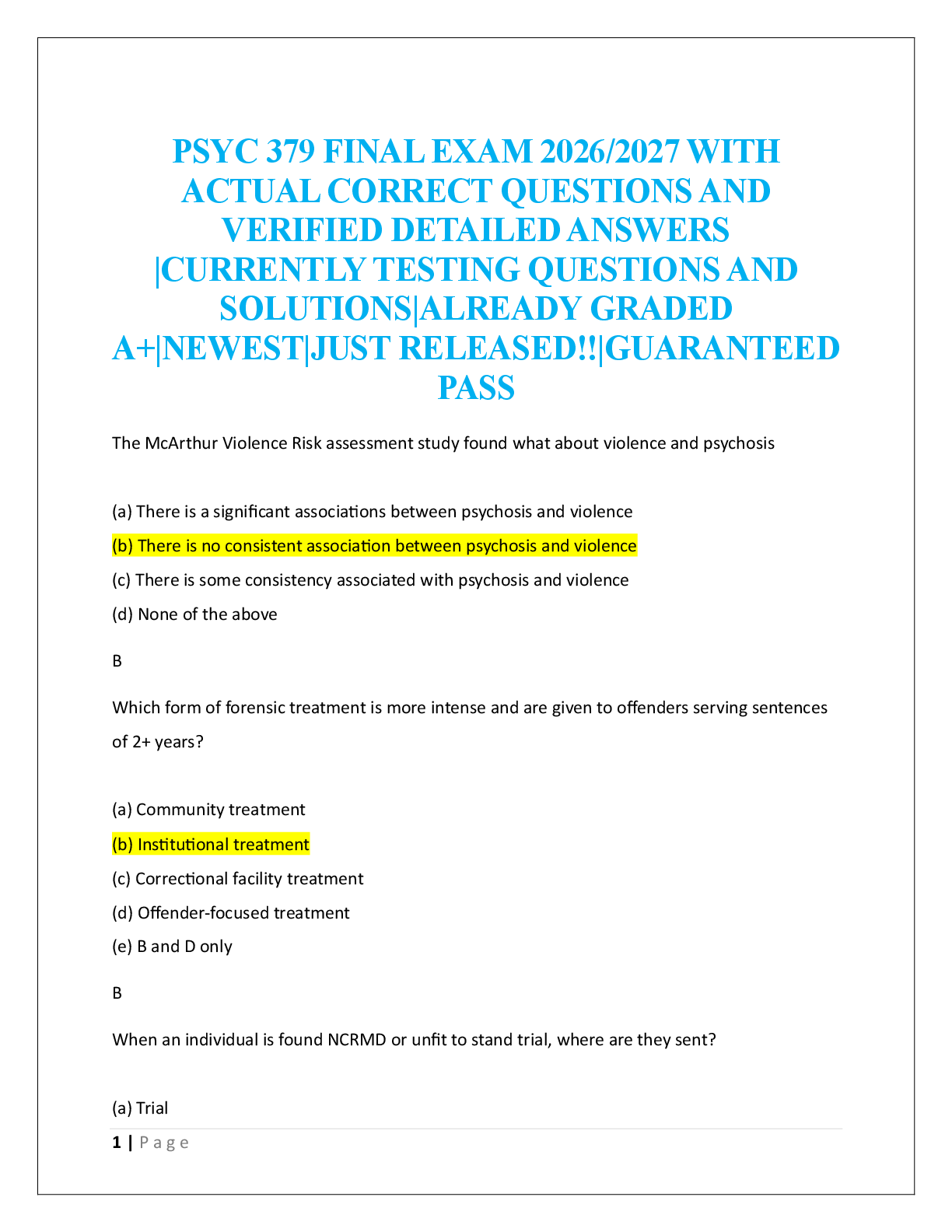c19 CNURSING 295 - Questions and Answers (Complete Solutions)
Document Content and Description Below
N295 ch19 MULTIPLE CHOICE 1. The sac that surrounds and protects the heart is called the: 2. The direction of blood flow through the heart is best described by which of these? 3. The ... nurse is reviewing the anatomy and physiologic functioning of the heart. Which statement best describes what is meant by atrial kick? 4. When listening to heart sounds, the nurse knows the valve closures that can be heard best at the base of the heart are: 5. Which of these statements describes the closure of the valves in a normal cardiac cycle? 6. The component of the conduction system referred to as the pacemaker of the heart is the: 7. The electrical stimulus of the cardiac cycle follows which sequence? 8. The findings from an assessment of a 70-year-old patient with swelling in his ankles include jugular venous pulsations 5 cm above the sternal angle when the head of his bed is elevated 45 degrees. The nurse knows that this finding indicates: 9. When assessing a newborn infant who is 5 minutes old, the nurse knows which of these statements to be true? 10. A 25-year-old woman in her fifth month of pregnancy has a blood pressure of 100/70 mm Hg. In reviewing her previous examination, the nurse notes that her blood pressure in her second month was 124/80 mm Hg. In evaluating this change, what does the nurse know to be true? 11. In assessing a 70-year-old man, the nurse finds the following: blood pressure 140/100 mm Hg; heart rate 104 beats per minute and slightly irregular; and the split S2 heart sound. Which of these findings can be explained by expected hemodynamic changes related to age? 12. A 45-year-old man is in the clinic for a routine physical examination. During the recording of his health history, the patient states that he has been having difficulty sleeping. “I’ll be sleeping great, and then I wake up and feel like I can’t get my breath.” The nurse’s best response to this would be: 13. In assessing a patient’s major risk factors for heart disease, which would the nurse want to include when taking a history? 14. The mother of a 3-month-old infant states that her baby has not been gaining weight. With further questioning, the nurse finds that the infant falls asleep after nursing and wakes up after a short time, hungry again. What other information would the nurse want to have? 15. In assessing the carotid arteries of an older patient with cardiovascular disease, the nurse would: 16. During an assessment of a 68-year-old man with a recent onset of right-sided weakness, the nurse hears a blowing, swishing sound with the bell of the stethoscope over the left carotid artery. This finding would indicate: 17. During an inspection of the precordium of an adult patient, the nurse notices the chest moving in a forceful manner along the sternal border. This finding most likely suggests a(n): 18. During an assessment of a healthy adult, where would the nurse expect to palpate the apical impulse? 19. The nurse is examining a patient who has possible cardiac enlargement. Which statement about percussion of the heart is true? 20. The nurse is preparing to auscultate for heart sounds. Which technique is correct? 21. While counting the apical pulse on a 16-year-old patient, the nurse notices an irregular rhythm. His rate speeds up on inspiration and slows on expiration. What would be the nurse’s response? 22. When listening to heart sounds, the nurse knows that the S1: 23. During the cardiac auscultation, the nurse hears a sound immediately occurring after the S2 at the second left intercostal space. To further assess this sound, what should the nurse do? 24. Which of these findings would the nurse expect to notice during a cardiac assessment on a 4-year-old child? 25. While auscultating heart sounds on a 7-year-old child for a routine physical examination, the nurse hears an S3, a soft murmur at the left midsternal border, and a venous hum when the child is standing. What would be a correct interpretation of these findings? 26. During the precordial assessment on an patient who is 8 months pregnant, the nurse palpates the apical impulse at the fourth left intercostal space lateral to the midclavicular line. This finding would indicate: 27. In assessing for an S4 heart sound with a stethoscope, the nurse would listen with the: 28. A 70-year-old patient with a history of hypertension has a blood pressure of 180/100 mm Hg and a heart rate of 90 beats per minute. The nurse hears an extra heart sound at the apex immediately before the S1. The sound is heard only with the bell of the stethoscope while the patient is in the left lateral position. With these findings and the patient’s history, the nurse knows that this extra heart sound is most likely a(n): 29. The nurse is performing a cardiac assessment on a 65-year-old patient 3 days after her myocardial infarction (MI). Heart sounds are normal when she is supine, but when she is sitting and leaning forward, the nurse hears a high-pitched, scratchy sound with the diaphragm of the stethoscope at the apex. It disappears on inspiration. The nurse suspects: 30. The mother of a 10-month-old infant tells the nurse that she has noticed that her son becomes blue when he is crying and that the frequency of this is increasing. He is also not crawling yet. During the examination the nurse palpates a thrill at the left lower sternal border and auscultates a loud systolic murmur in the same area. What would be the most likely cause of these findings? 31. A 30-year-old woman with a history of mitral valve problems states that she has been “very tired.” She has started waking up at night and feels like her “heart is pounding.” During the as-sessment, the nurse palpates a thrill and lift at the fifth left intercostal space midclavicular line. In the same area, the nurse also auscultates a blowing, swishing sound right after the S1. These findings would be most consistent with: 32. During a cardiac assessment on a 38-year-old patient in the hospital for “chest pain,” the nurse finds the following: jugular vein pulsations 4 cm above the sternal angle when the patient is ele-vated at 45 degrees, blood pressure 98/60 mm Hg, heart rate 130 beats per minute, ankle edema, difficulty breathing when supine, and an S3 on auscultation. Which of these conditions best ex-plains the cause of these findings? 33. The nurse knows that normal splitting of the S2 is associated with: 34. During a cardiovascular assessment, the nurse knows that a thrill is: 35. During a cardiovascular assessment, the nurse knows that an S4 heart sound is: 36. During an assessment, the nurse notes that the patient’s apical impulse is laterally displaced and is palpable over a wide area. This finding indicates: 37. When the nurse is auscultating the carotid artery for bruits, which of these statements reflects the correct technique? 38. The nurse is preparing for a class on risk factors for hypertension and reviews recent statistics. Which racial group has the highest prevalence of hypertension in the world? 39. The nurse is assessing a patient with possible cardiomyopathy and assesses the hepatojugular reflux. If heart failure is present, then the nurse should recognize which finding while pushing on the right upper quadrant of the patient’s abdomen, just below the rib cage? 40. The nurse is assessing the apical pulse of a 3-month-old infant and finds that the heart rate is 135 beats per minute. The nurse interprets this result as: MULTIPLE RESPONSE 1. The nurse is presenting a class on risk factors for cardiovascular disease. Which of these are considered modifiable risk factors for MI? Select all that apply. SHORT ANSWER 1. The nurse is assessing a patient’s pulses and notices a difference between the patient’s apical pulse and radial pulse. The apical pulse was 118 beats per minute, and the radial pulse was 105 beats per minute. What is the pulse deficit? [Show More]
Last updated: 3 years ago
Preview 1 out of 15 pages
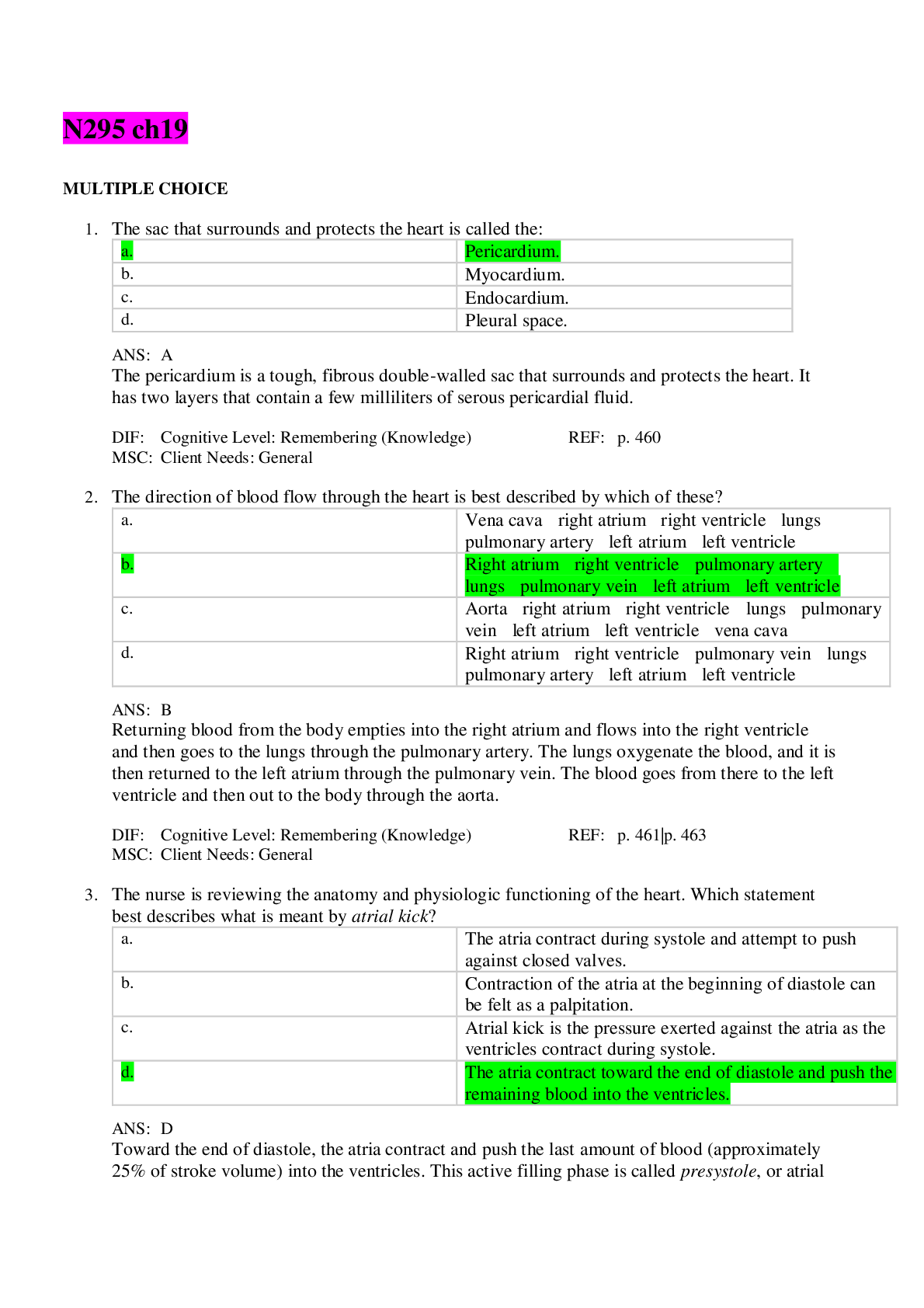
Buy this document to get the full access instantly
Instant Download Access after purchase
Buy NowInstant download
We Accept:

Also available in bundle (1)
Click Below to Access Bundle(s)

CNURSING 295
CHAPTER 23 NEUROLOGIC SYSTEM,CHAPTER 21 ABDOMINAL ASSESSMENT,N295 EXAM 4,N295 EXAM 3,c22,c21,c19,c18,c17,c16,c15,c14,c13,c12,c11,c10,c9,c8,c7,c6,c5,c4,c2,c1
By Ajay25 4 years ago
$75
24
Reviews( 0 )
$15.00
Can't find what you want? Try our AI powered Search
Document information
Connected school, study & course
About the document
Uploaded On
Jan 18, 2021
Number of pages
15
Written in
All
Additional information
This document has been written for:
Uploaded
Jan 18, 2021
Downloads
0
Views
180


